Computational Model of Effective Thermal Conductivity of Green Insulating Fibrous Media
Abstract
:1. Introduction
2. Theoretical Models for Effective Thermal Conductivity
2.1. Analytical Approach
2.2. Numerical Calculation of the Thermal Conductivity of Fibrous Composites by FEM
- First, one-dimensional (1D) heat transfer is considered; therefore, the area S must be much larger than the thickness L of the sample. To circumvent this constraint, it is common practice to apply adiabatic conditions on lateral boundaries where temperatures are not prescribed (i.e., boundaries parallel to the direction of heat flow).
- Secondly, this formula assumes that a linear variation in temperature prevails through the thickness of the sample. To achieve this, the absolute value of must be chosen to be sufficiently small.
- (Equation (4)) allows for estimating the effective conductivity in the direction of the imposed temperature gradient. Therefore, in order to evaluate the possible anisotropy of the material thermal behavior, the same calculation must be performed in each of the three Cartesian directions.
- Finally, we also consider that the thermal contacts between the matrix material and the fibers are perfect: there is no thermal contact resistance at the fiber/matrix interfaces.
2.3. FEM Numerical Modeling with ABAQUS Software
- Random orientation in the space (“random 3D”);
- Random orientation in a plane (“random 2D”)—this plane may be, for example, parallel to some sides of the parallelepipedal REV.
- A first step, conducted before the recourse to the ABAQUS utilization, consisted of generating the arrangement of fibers with the aimed characteristics (fiber volume fraction , 2D (Figure 1) or 3D random orientations, and diameter distribution DIS()). The algorithm developed in Fortran language, unfolded as follows:
- Random location, orientation, diameter, and length of the new fiber are randomly chosen, i.e., by means of successive random numbers comprised between 0 and 1; 1 < < 0:
- = .; = .; = .
- (, , ) for a random 3D distribution, we have = cos(); = 2.. and = 0; for a random 2D distribution of fibers in a plane normal to the Z-axis, we have = /2; = 2.. and = 0
- D is obtained from a random number in order to satisfy:
- L = .D
- Then, we check if this newly generated fiber intersects a previously generated fiber of the current arrangement. In this case, the process returns to Step 1.
- Thereafter, the current fiber volume fraction (fraction of the REV .. occupied by the fibers) is updated by adding the volume of the new fibers comprised in the REV.
- Once the locations and orientations of the fibers in the arrangement with the provided characteristics have been determined, the generation process utilizes the ABAQUS integrated interface (ABAQUS CAE) in order to construct the physical model on which the thermal simulation will be conducted. Thus, several automated steps are successively performed in ABAQUS CAE using Python scripts:
- -
- Step 1: Geometry generationFirstly, a volume containing the N cylindrical objects (each of them with a diameter and length , for n = 1, N) representing the N fibers of the arrangement is generated. These volumes are created from a homogeneous medium noted A.Thereafter, a second parallelepipedal volume (B) with the dimensions of the REV (length–width–height of --, respectively) containing a homogeneous medium B representing the matrix is generated. A boolean operation (implemented in ABAQUS CAE) is then applied to remove the N cylinders (Volume A) from the parallelepipedal volume (B) to create Volume C. Then, Volumes A and C are gathered together inside a physical model composed of two phases (Volume A: fibers; Volume C: matrix). Finally, still in ABAQUS CAE, this physical model is cut according to the planes ; ; ; ; and in order to comply with the dimensions of the parallelepipedal REV.
- -
- Step 2: Meshing of the modelThe meshing tool integrated in the CAE interface is used to generate finite elements of Volumes C (Matrix) and A (N fibers). Quadratic tetrahedron elements («DC3D10» in ABAQUS) illustrated in Figure 5c are used in the present work. They allow for an accurate estimation of the thermal fields with a reasonable mesh refinement. We checked that the mesh densities used were sufficient in order for the results to be independent of the refinement.
- -
- Step 3: Thermal contact conditions assignmentAs explained previously, the thermal contact at the interface between the matrix and fibers is considered perfect. To account for this hypothesis, in ABAQUS CAE, a thermal continuity condition is specified at the interface between the two volumes (Volume A/Volume C) with a very large thermal conductance leading to a negligible thermal contact resistance. Note that a non-perfect thermal contact between the two phases might be modeled by specifying a lower value of the thermal conductance. The fibers can come into contact with the rest of fibers.
- -
- Step 4: Material Properties AssignmentIn ABAQUS CAE, the thermal conductivities are affected at each phase ( for Volume C representing the Matrix; for Volumes A representing the N fibers) and might depend on the temperature.The ABAQUS model is then complete and ready for the realization of the thermal simulations according to prescribed boundary conditions. The different successive steps for the model generation are illustrated in the following Figure 6.
2.4. Boundary Conditions Used for Modeling
2.5. Estimation of the Effective Conductivity from the FEM Computations
3. Results and Discussion
3.1. Infinitely Long Fibers in Vacuum
3.1.1. Influence of Mesh Size
3.1.2. Influence of the Cubic REV Size
3.1.3. Influence of the Slice REV Size
3.1.4. Influence of Volume Fraction
3.2. Random Fibers in Air: Infinitely Long and Short Fibers
3.3. Fibers in Mortar: Case of Infinitely Long and Short Fibers
4. Conclusions
Author Contributions
Funding
Institutional Review Board Statement
Informed Consent Statement
Data Availability Statement
Conflicts of Interest
Abbreviations
| ATC | Apparent thermal conductivity |
| BC | Boundary condition |
| ETC | Effective thermal conductivity |
| Exp | Experimental |
| FEM | Finite element method |
| JMC | Juncus maritimus composite |
| LF | Long fiber |
| MBC | Mixed boundary conditions |
| RD | Relative deviation |
| REV | Representative element volume |
| SF | Short fiber |
| UTGC | Uniform temperature gradient conditions |
| Acronyms | |
| e | Thickness (m) |
| k | Thermal conductivity (W.K.m) |
| Q | Heat flow (W) |
| S | Surface (m) |
| T | Temperature (°C) |
| Subscripts | |
| eff | Effective |
| fib | Fiber |
| fluid | Fluid phase |
| fv | Volume fraction |
| JM | Juncus maritimus |
| mat | Matrix |
| Greek symbols | |
| fiber length to diameter ratio | |
| Δ | Difference |
| cylindrical particles (fibers) |
References
- Baillis, D.; Coquard, R.; Moura, L. Heat transfer in cellulose-based aerogels: Analytical modelling and measurements. Energy 2015, 84, 732–744. [Google Scholar] [CrossRef]
- Coquard, R.; Baillis, D. Thermal conductivity of Kelvin cell cellulosic aerogels: Analytical and Monte Carlo approaches. J. Mater. Sci. 2017, 52, 11135–11145. [Google Scholar] [CrossRef]
- Cherki, A.B.; Remy, B.; Khabbazi, A.; Jannot, Y.; Baillis, D. Experimental thermal properties characterization of insulating cork–gypsum composite. Constr. Build. Mater. 2014, 54, 202–209. [Google Scholar] [CrossRef]
- Barreca, F.; Fichera, C.R. Thermal insulation performance assessment of agglomerated cork boards. Wood Fiber Sci. 2016, 48, 96–103. [Google Scholar]
- Collet, F.; Pretot, S. Thermal conductivity of hemp concretes: Variation with formulation, density and water content. Constr. Build. Mater. 2014, 65, 612–619. [Google Scholar] [CrossRef]
- Evrard, A.; De Herde, A. Hygrothermal performance of lime-hemp wall assemblies. J. Build. Phys. 2010, 34, 5–25. [Google Scholar] [CrossRef]
- Le, A.T.; Maalouf, C.; Mai, T.H.; Wurtz, E.; Collet, F. Transient hygrothermal behaviour of a hemp concrete building envelope. Energy Build. 2010, 42, 1797–1806. [Google Scholar]
- Rahim, M.; Douzane, O.; Le, A.T.; Langlet, T. Effect of moisture and temperature on thermal properties of three bio-based materials. Constr. Build. Mater. 2016, 111, 119–127. [Google Scholar] [CrossRef]
- Benmansour, N.; Agoudjil, B.; Gherabli, A.; Kareche, A.; Boudenne, A. Thermal and mechanical performance of natural mortar reinforced with date palm fibers for use as insulating materials in building. Energy Build. 2014, 81, 98–104. [Google Scholar] [CrossRef]
- Chikhi, M.; Agoudjil, B.; Boudenne, A.; Gherabli, A. Experimental investigation of new biocomposite with low cost for thermal insulation. Energy Build. 2013, 66, 267–273. [Google Scholar] [CrossRef]
- Agoudjil, B.; Benchabane, A.; Boudenne, A.; Ibos, L.; Fois, M. Renewable materials to reduce building heat loss: Characterization of date palm wood. Energy Build. 2011, 43, 491–497. [Google Scholar] [CrossRef]
- Boumhaout, M.; Boukhattem, L.; Hamdi, H.; Benhamou, B.; Nouh, F.A. Thermomechanical characterization of a bio-composite building material: Mortar reinforced with date palm fibers mesh. Constr. Build. Mater. 2017, 135, 241–250. [Google Scholar] [CrossRef]
- Saghrouni, Z.; Baillis, D.; Naouar, N.; Blal, N.; Jemni, A. Thermal properties of new insulating juncus maritimus fibrous mortar composites/experimental results and analytical laws. Appl. Sci. 2019, 9, 981. [Google Scholar] [CrossRef]
- Xu, Y.; Yagi, K. Automatic FEM model generation for evaluating thermal conductivity of composite with random materials arrangement. Comput. Mater. Sci. 2004, 30, 242–250. [Google Scholar] [CrossRef]
- Penazzi, L. Construction d’une Fonction de Transfert par la Méthode Monte Carlo Symbolique: Application à la Thermique Couplée en Géométries Complexes. Ph.D. Thesis, Ecole des Mines d’Albi-Carmaux, Albi, France, 2020. [Google Scholar]
- Khalid, M.Y.; Al Rashid, A.; Arif, Z.U.; Ahmed, W.; Arshad, H.; Zaidi, A.A. Natural fiber reinforced composites: Sustainable materials for emerging applications. Results Eng. 2021, 11, 100263. [Google Scholar] [CrossRef]
- Nurazzi, N.; Asyraf, M.; Khalina, A.; Abdullah, N.; Aisyah, H.; Rafiqah, S.A.; Sabaruddin, F.; Kamarudin, S.; Norrrahim, M.; Ilyas, R.; et al. A review on natural fiber reinforced polymer composite for bullet proof and ballistic applications. Polymers 2021, 13, 646. [Google Scholar] [CrossRef]
- Vijayan, R.; Krishnamoorthy, A. Review on natural fiber reinforced composites. Mater. Today Proc. 2019, 16, 897–906. [Google Scholar] [CrossRef]
- Tan, L.; Shi, X.; Cheng, T.; Zeng, X.; Zheng, H. Numerical study on effective thermal conductivity of transparent electrospun polymer composite. Appl. Therm. Eng. 2019, 160, 113949. [Google Scholar] [CrossRef]
- Li, H.; Li, S.; Wang, Y. Prediction of effective thermal conductivities of woven fabric composites using unit cells at multiple length scales. J. Mater. Res. 2011, 26, 384–394. [Google Scholar] [CrossRef]
- Low, Z.K.; Blal, N.; Naouar, N.; Baillis, D. Influence of boundary conditions on computation of the effective thermal conductivity of foams. Int. J. Heat Mass Transf. 2020, 155, 119781. [Google Scholar] [CrossRef]
- Randrianalisoa, J.; Baillis, D. Thermal conductive and radiative properties of solid foams: Traditional and recent advanced modelling approaches. Comptes Rendus Phys. 2014, 15, 683–695. [Google Scholar] [CrossRef]
- Schuetz, M.; Glicksman, L. A Basic Study of Heat Transfer Through Foam Insulation. J. Cell. Plast. 1984, 20, 114–121. [Google Scholar] [CrossRef]
- Schuetz, M.A. Heat Transfer in Foam Insulation. Ph.D. Thesis, Massachusetts Institute of Technology, Cambridge, MA, USA, 1983. [Google Scholar]
- Öchsner, A.; Murch, G.E.; de Lemos, M.J. Cellular and Porous Materials: Thermal Properties Simulation and Prediction; John Wiley & Sons: Hoboken, NJ, USA, 2008. [Google Scholar]
- Suter, S.; Steinfeld, A.; Haussener, S. Pore-level engineering of macroporous media for increased performance of solar-driven thermochemical fuel processing. Int. J. Heat Mass Transf. 2014, 78, 688–698. [Google Scholar] [CrossRef]
- Petrasch, J.; Schrader, B.; Wyss, P.; Steinfeld, A. Tomography-based determination of the effective thermal conductivity of fluid-saturated reticulate porous ceramics. J. Heat Transf. 2008, 130, 032602. [Google Scholar] [CrossRef]
- Mendes, M.A.; Ray, S.; Trimis, D. A simple and efficient method for the evaluation of effective thermal conductivity of open-cell foam-like structures. Int. J. Heat Mass Transf. 2013, 66, 412–422. [Google Scholar] [CrossRef]
- Baillis, D.; Coquard, R. Radiative and conductive thermal properties of foams. In Cellular and Porous Materials: Thermal Properties Simulation and Prediction; John Wiley & Sons: Hoboken, NJ, USA, 2008; pp. 343–384. [Google Scholar]
- Dirrenberger, J.; Forest, S.; Jeulin, D. Towards gigantic RVE sizes for 3D stochastic fibrous networks. Int. J. Solids Struct. 2014, 51, 359–376. [Google Scholar] [CrossRef]
- Jiang, M.; Jasiuk, I.; Ostoja-Starzewski, M. Apparent thermal conductivity of periodic two-dimensional composites. Comput. Mater. Sci. 2002, 25, 329–338. [Google Scholar] [CrossRef]
- Coquard, R.; Loretz, M.; Baillis, D. Conductive Heat Transfer in Metallic/Ceramic Open-Cell Foams. Adv. Eng. Mater. 2008, 10, 323–337. [Google Scholar] [CrossRef]
- Zhang, Y.; Fang, Q. BlenderPhotonics: An integrated open-source software environment for three-dimensional meshing and photon simulations in complex tissues. J. Biomed. Opt. 2022, 27, 083014. [Google Scholar] [CrossRef]
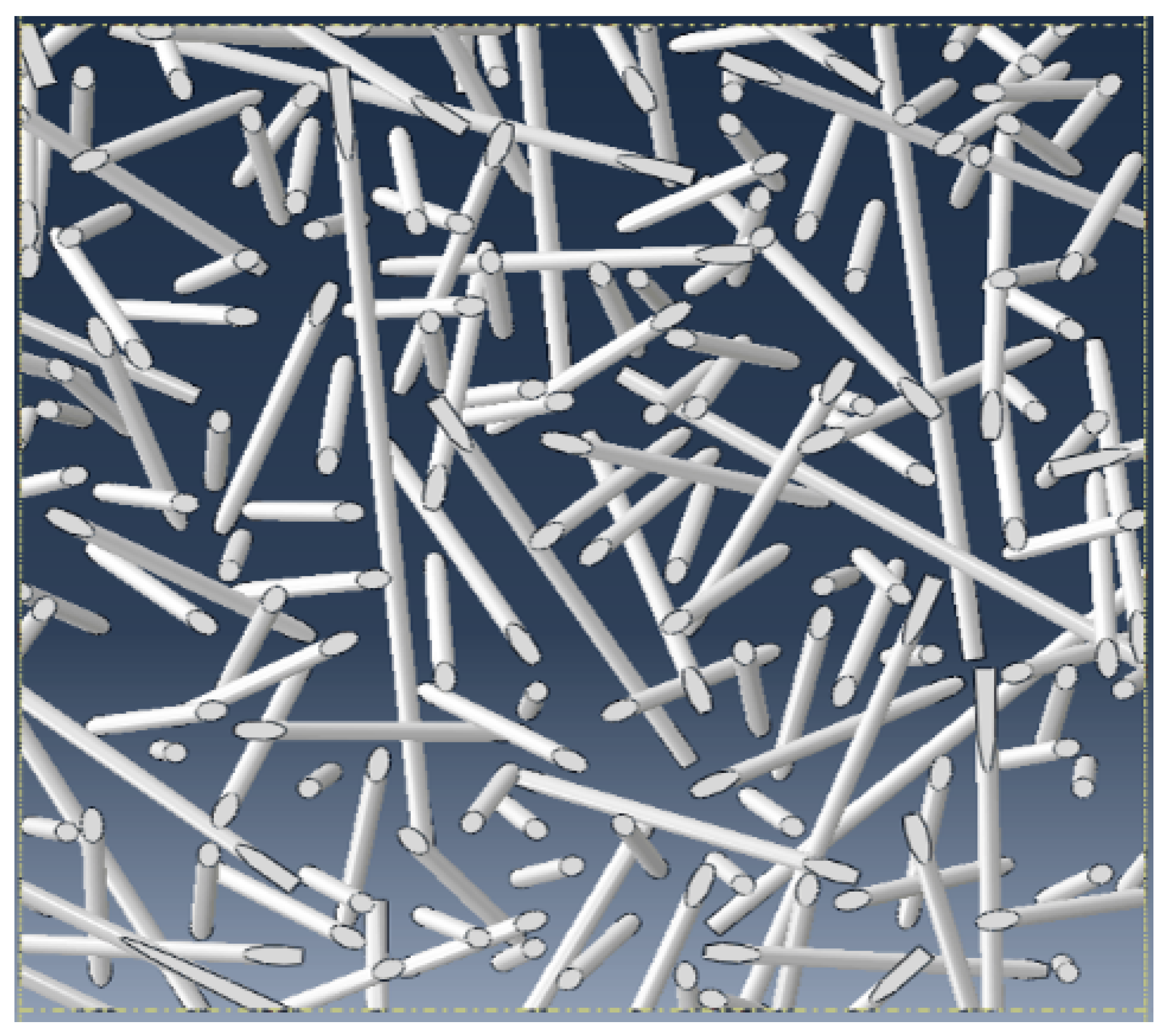
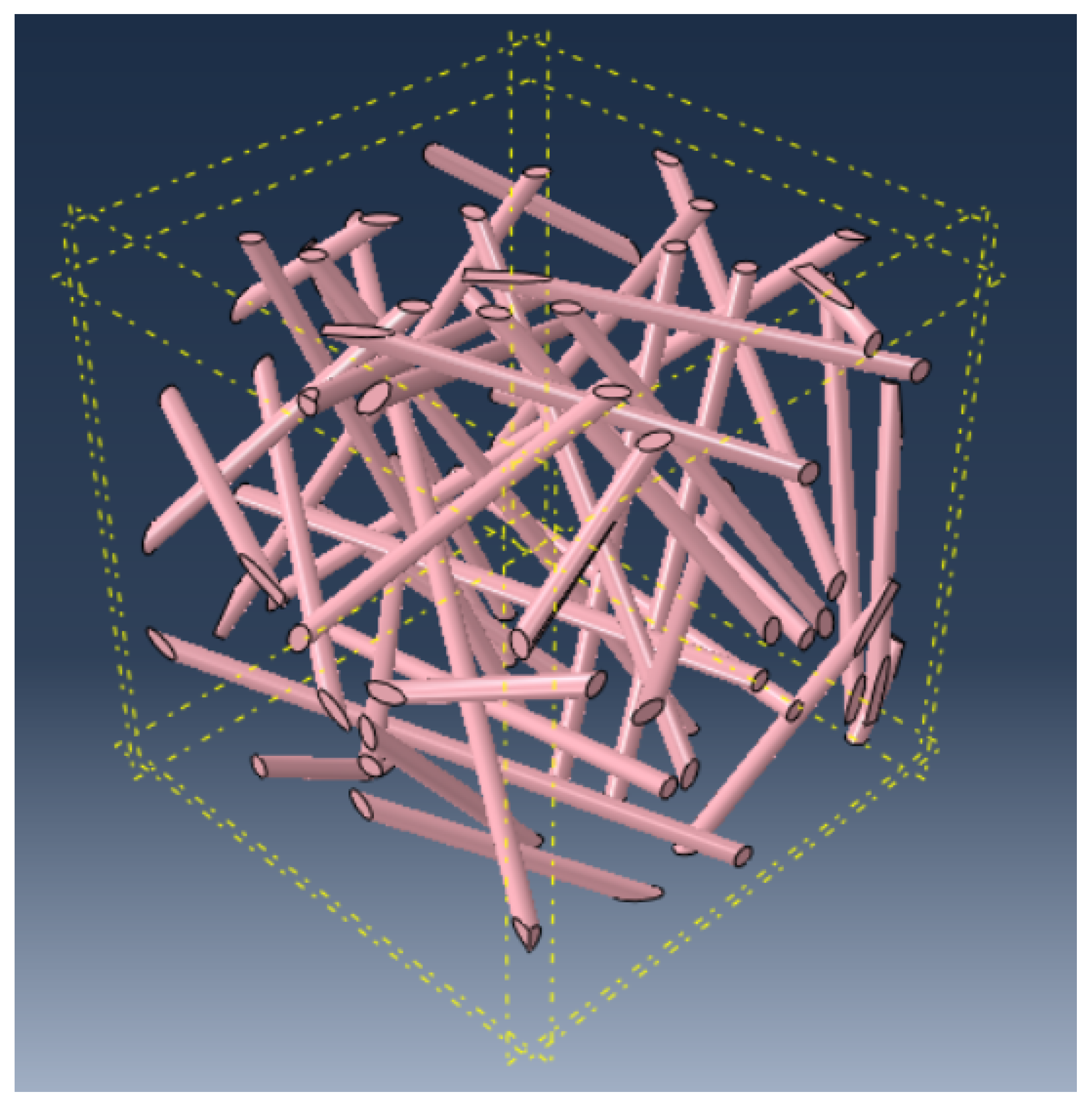



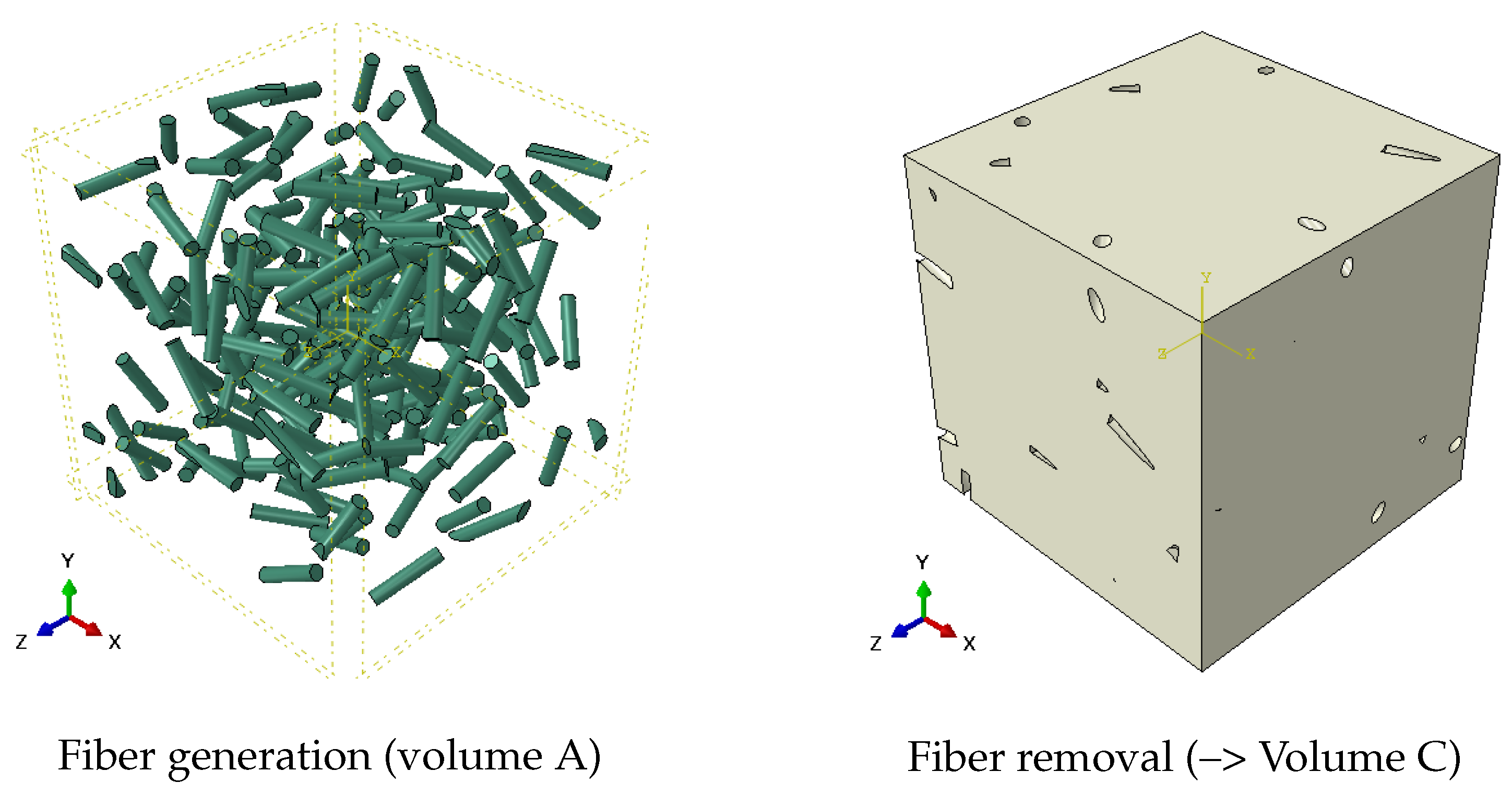
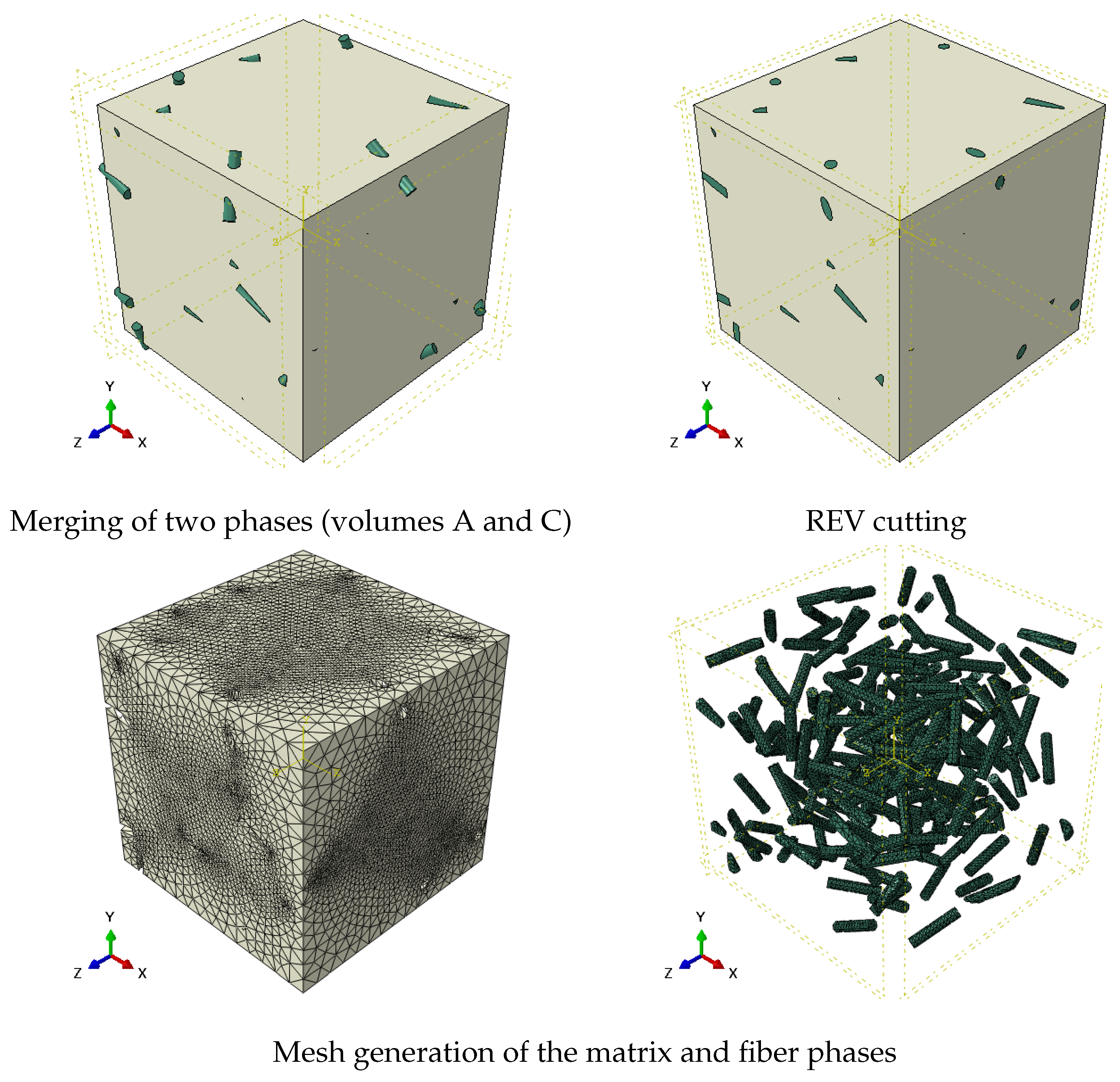
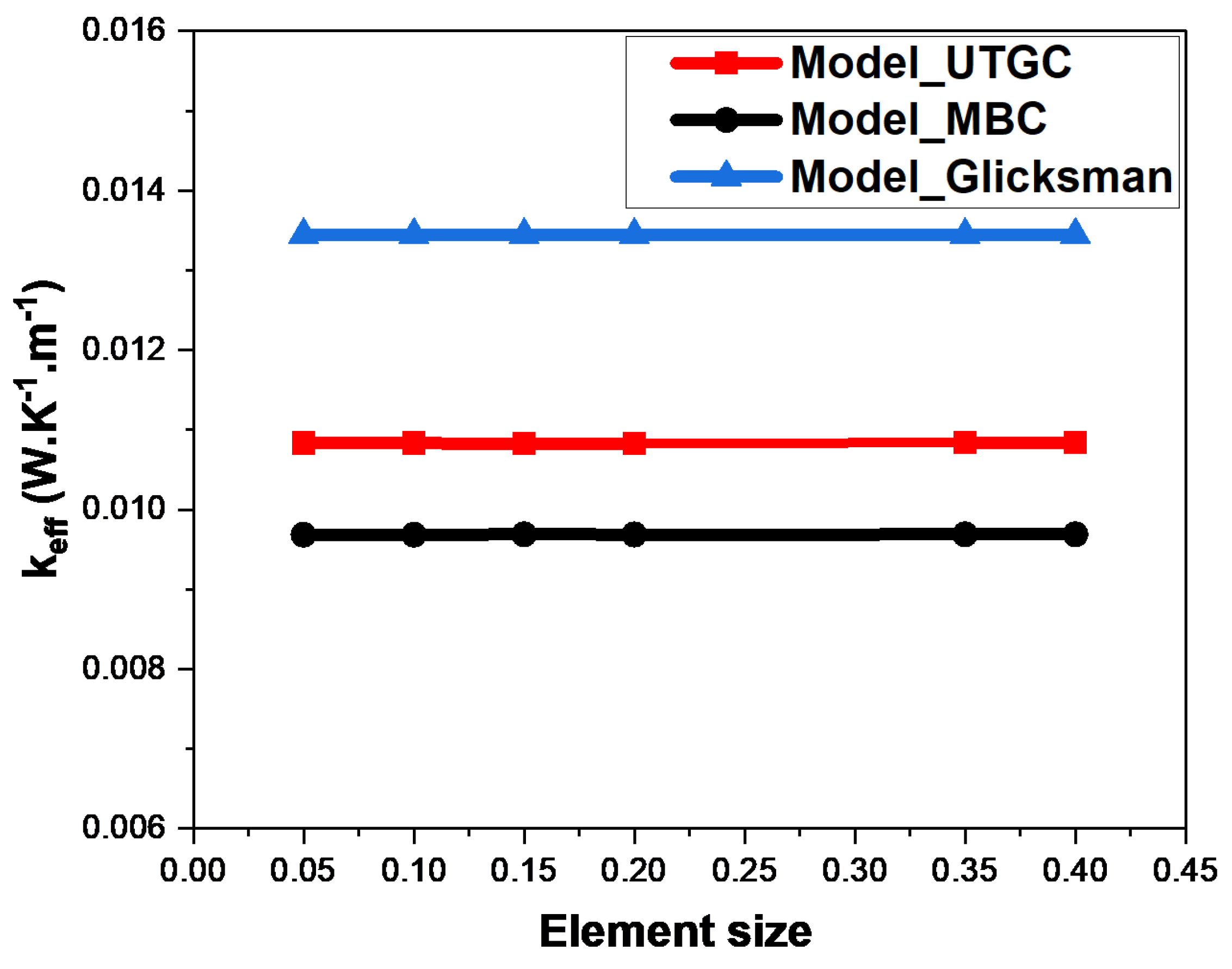

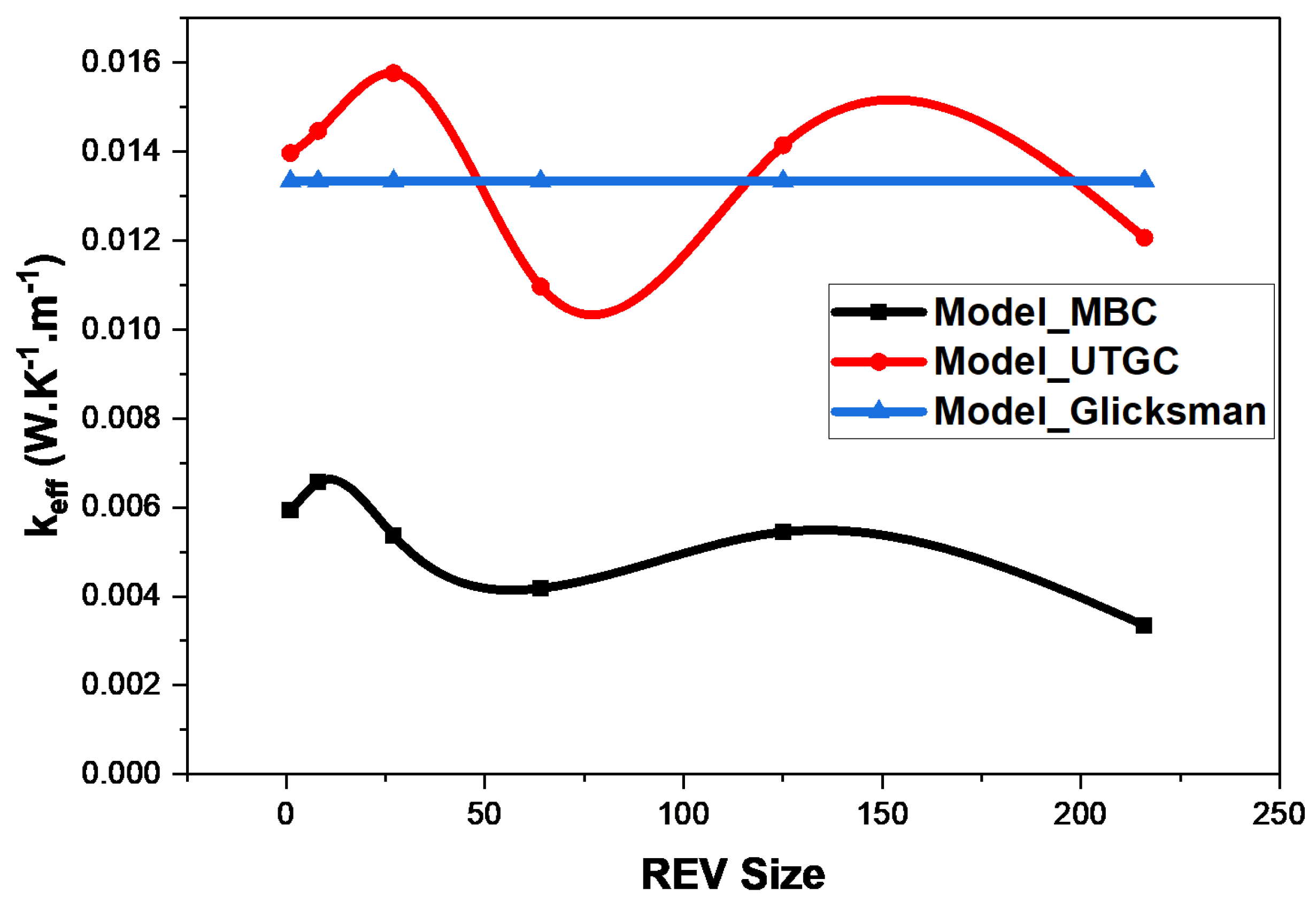
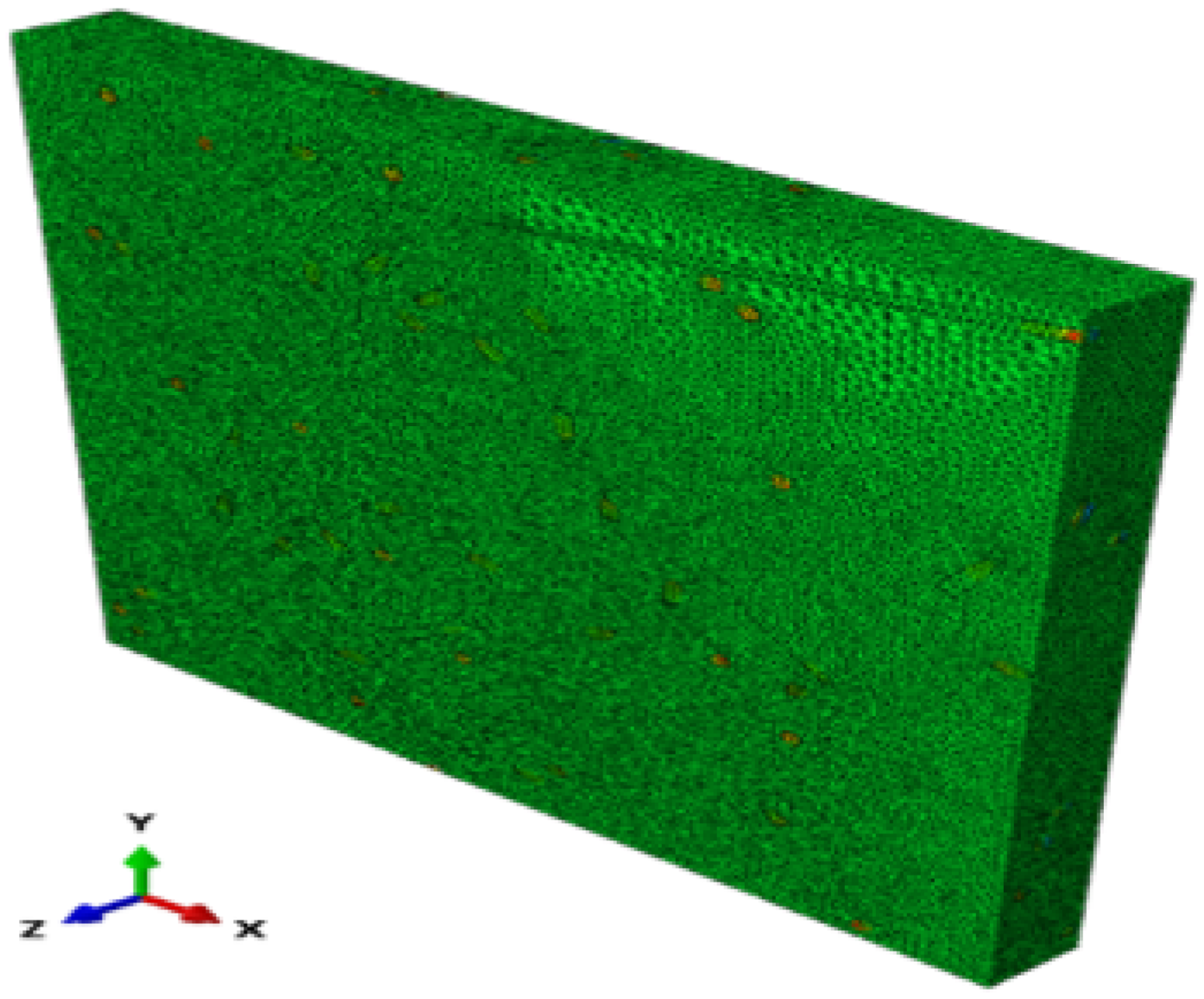
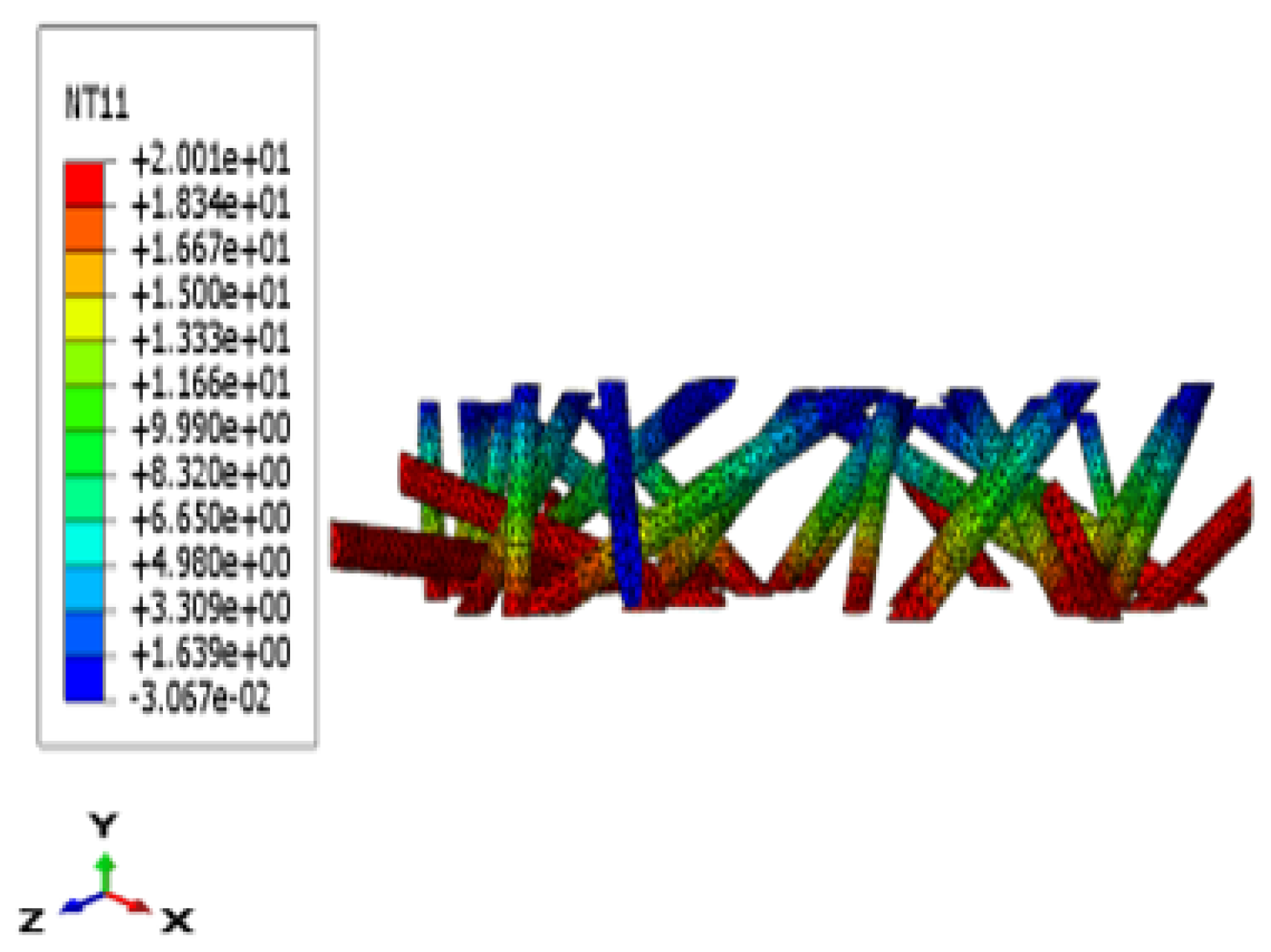
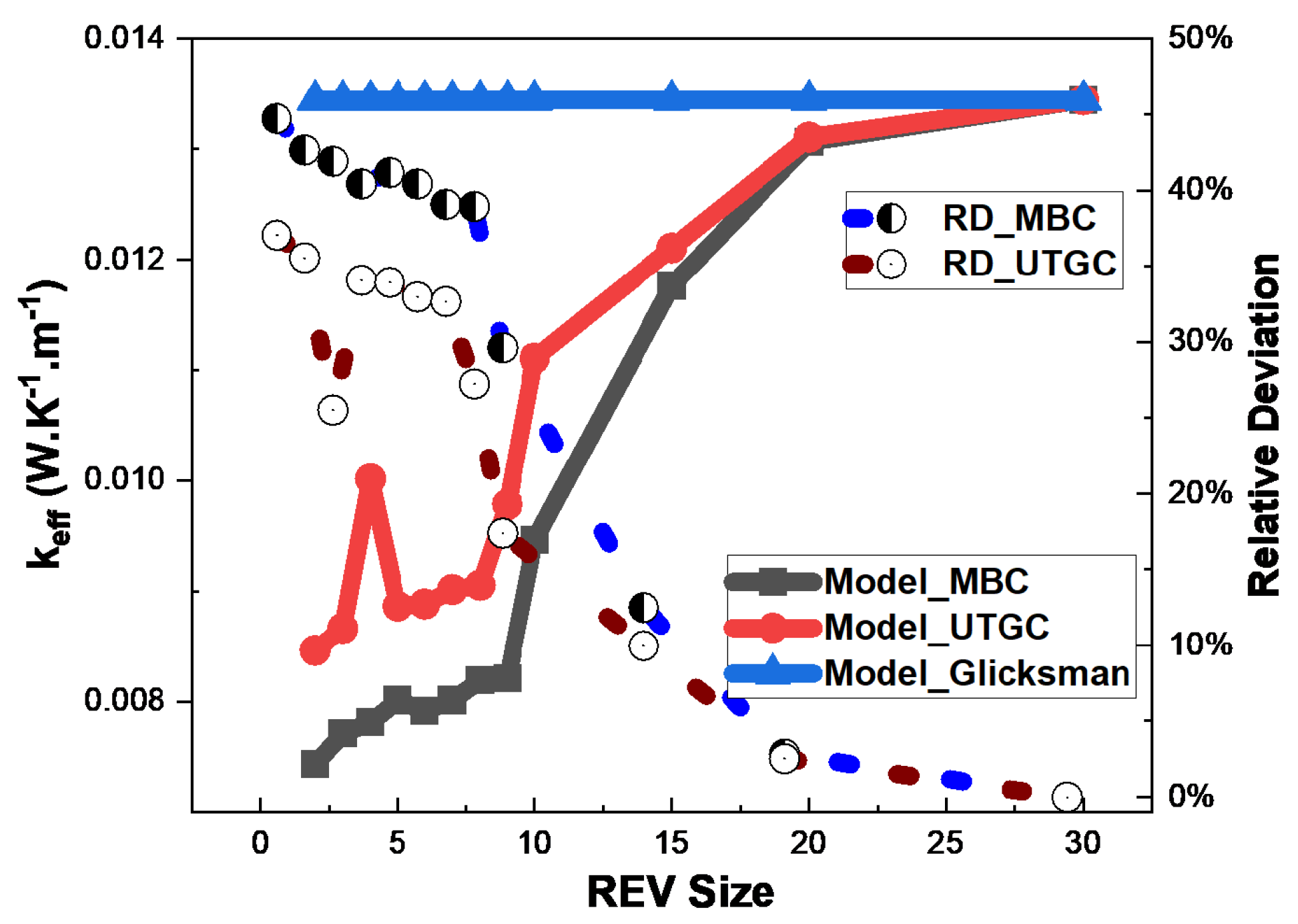


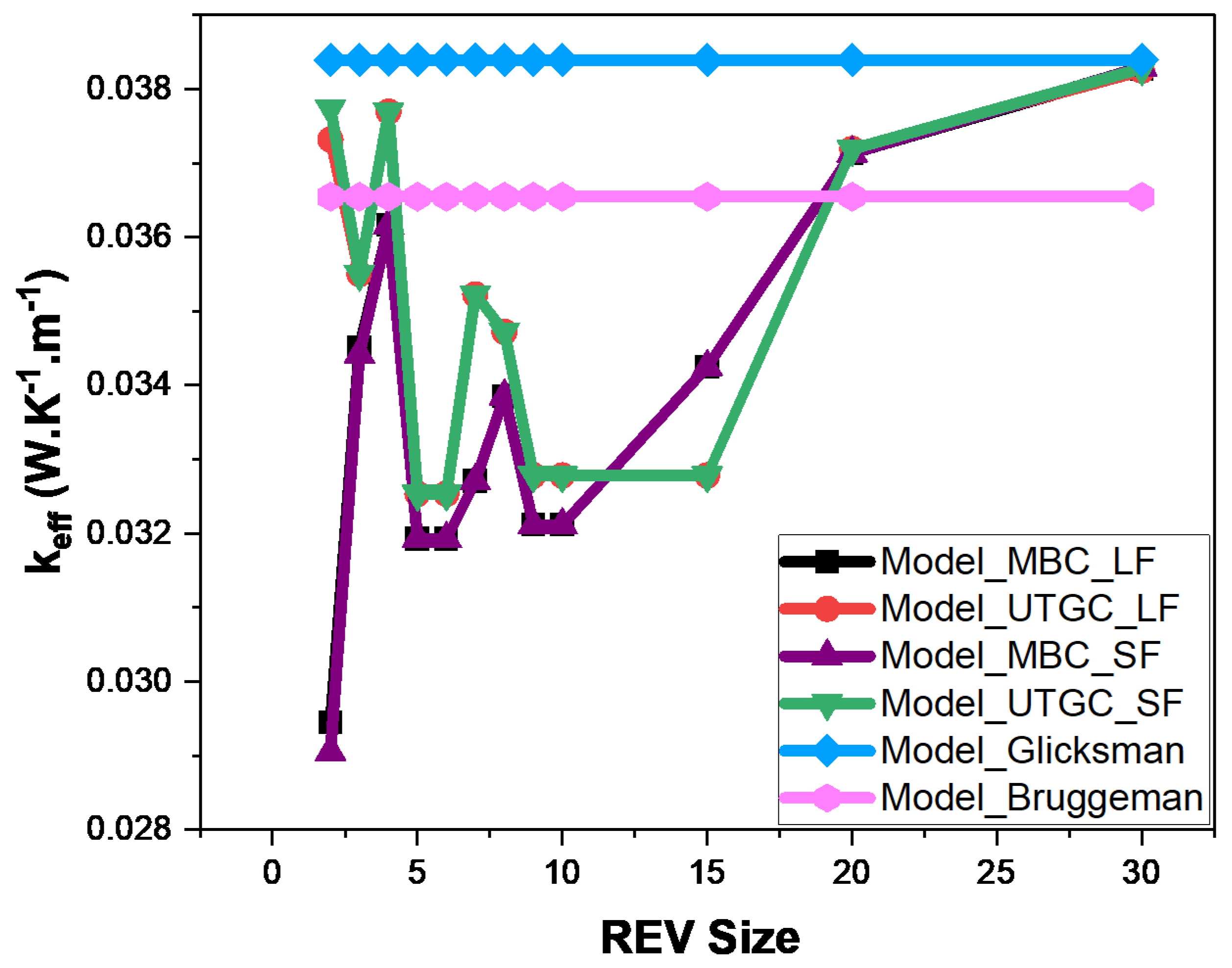
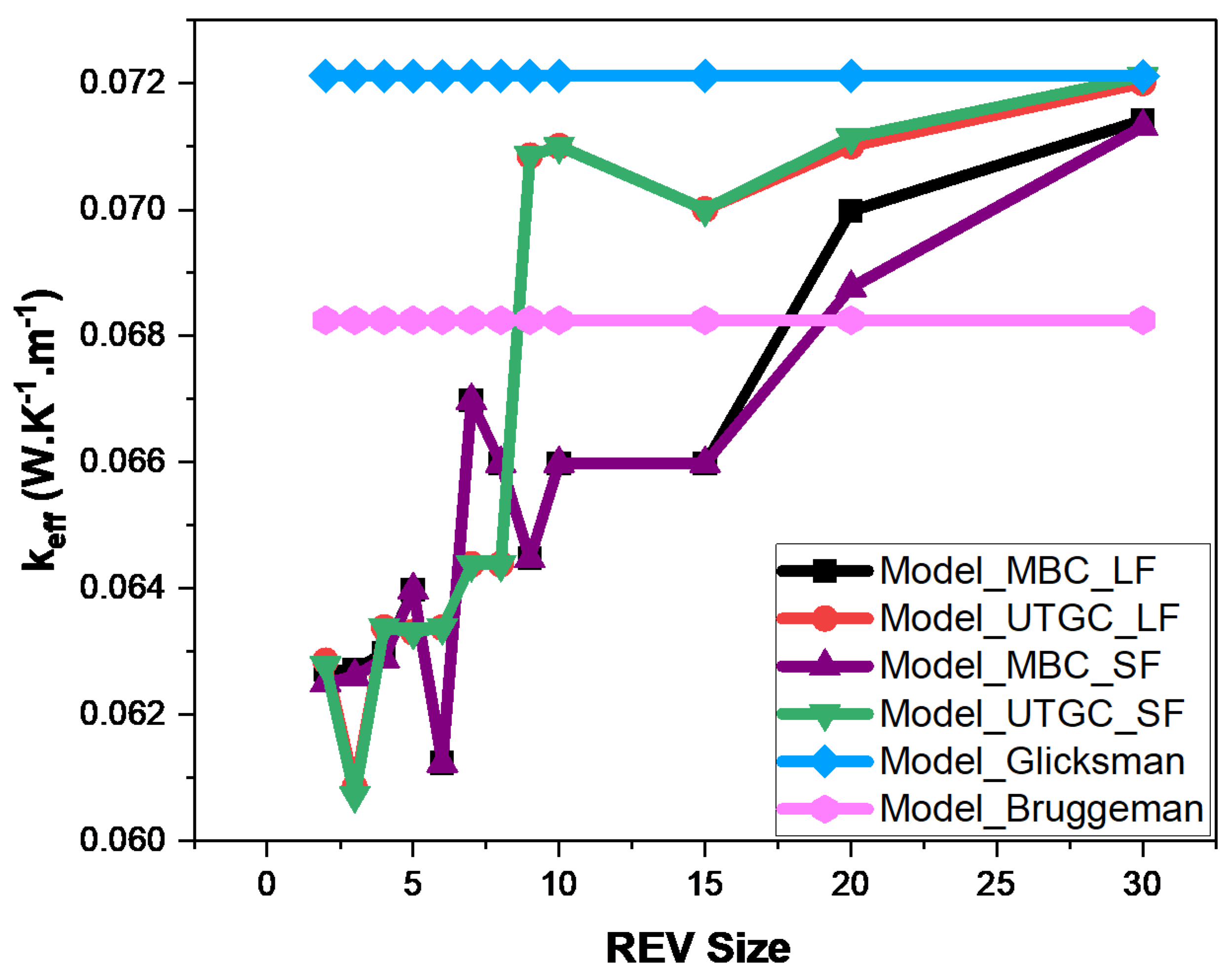
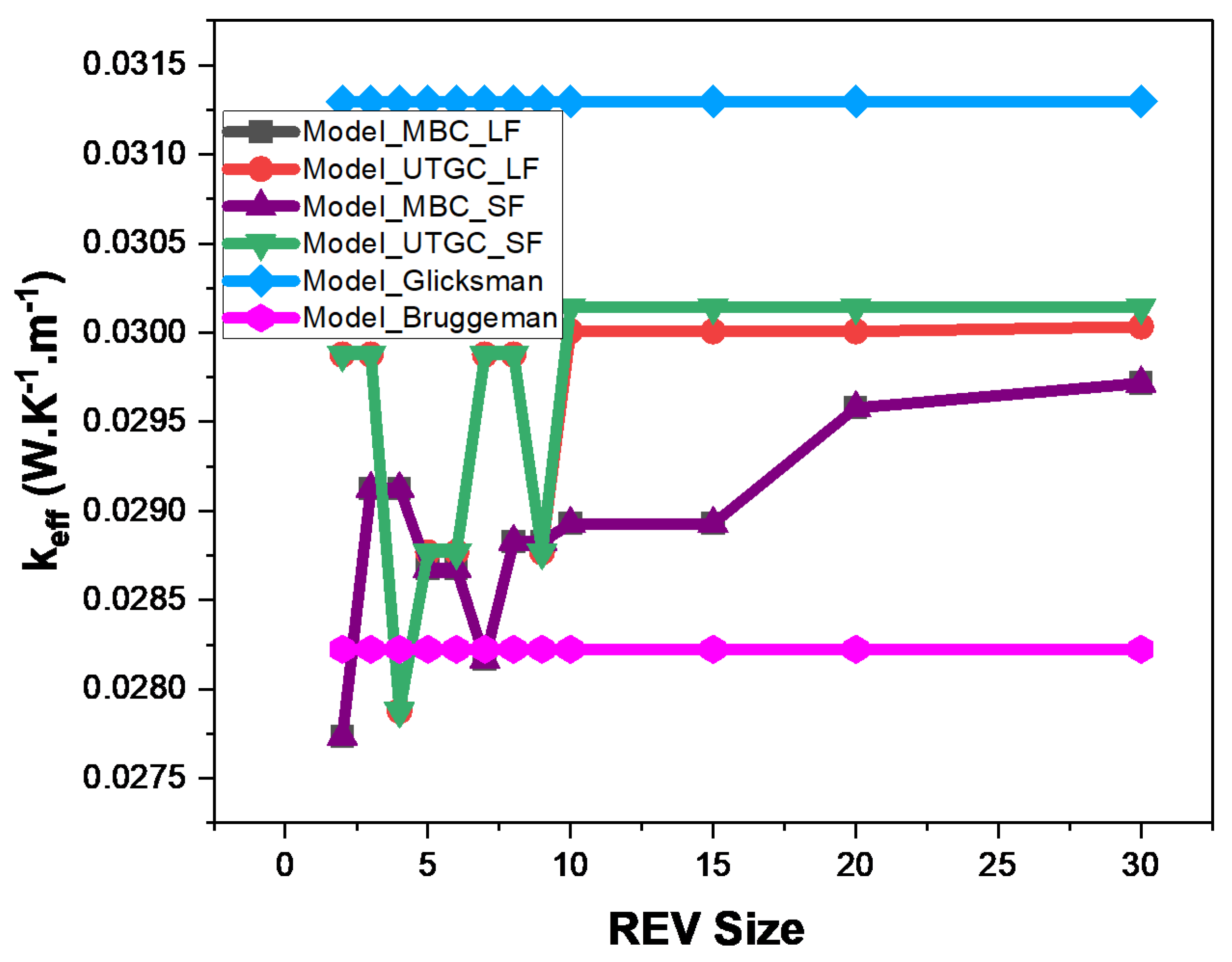

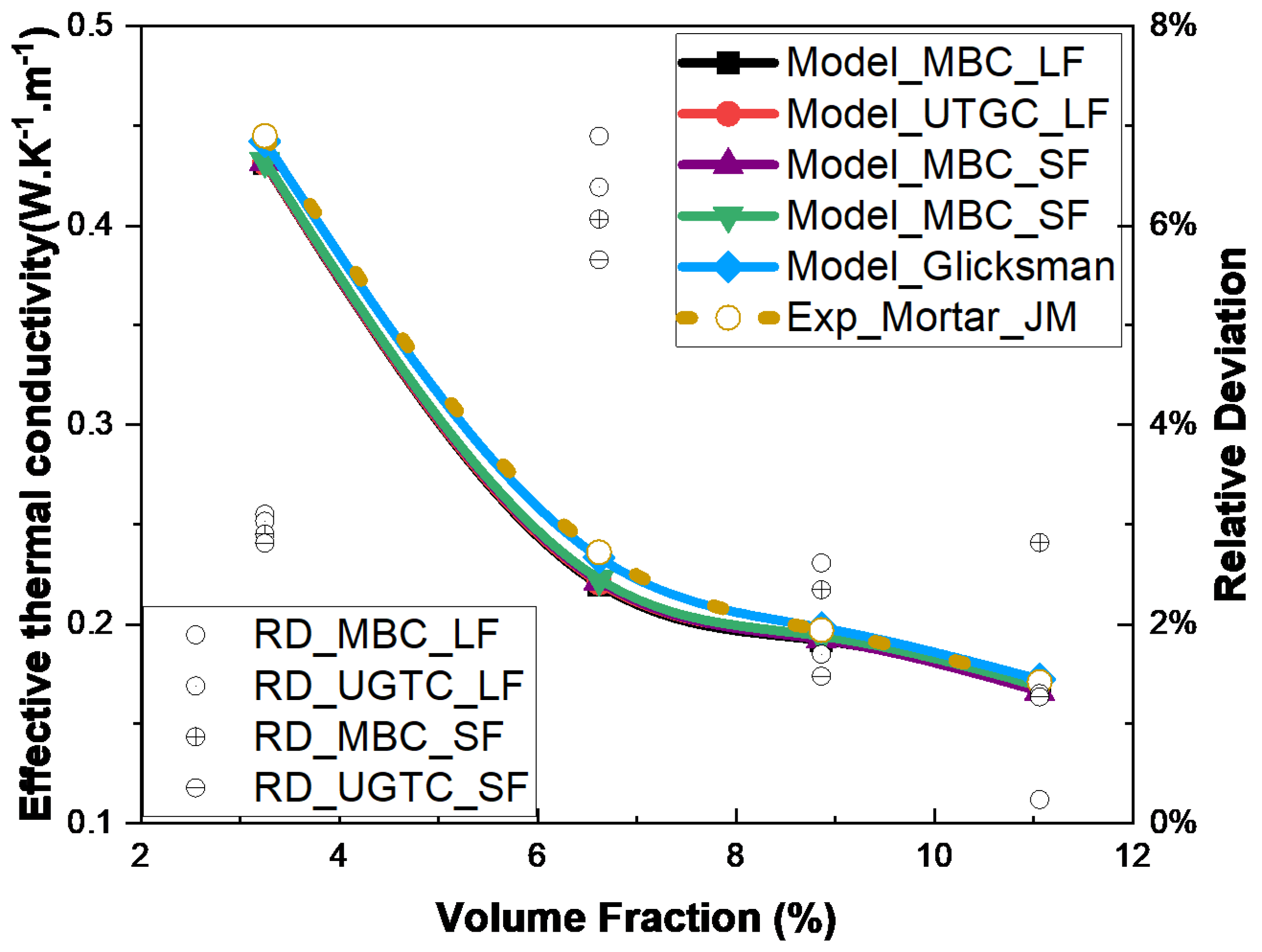
| Sample | JMC1 | JMC2 | JMC3 | JMC4 |
|---|---|---|---|---|
| Mass ratio of juncus maritimus to mortar mixture (%) | 2 | 5 | 7 | 10 |
| Juncus maritimus volume fraction (%) | 3.25 | 6.62 | 8.86 | 11.06 |
| Mortar thermal conductivity (W.K.m) | 0.454 | 0.239 | 0.211 | 0.182 |
| Composite Mortar/JM Exp (W.K.m) | 0.44 | 0.236 | 0.197 | 0.171 |
| Juncus maritimus Thermal Conductivity (W.K.m) | 0.472 |
Disclaimer/Publisher’s Note: The statements, opinions and data contained in all publications are solely those of the individual author(s) and contributor(s) and not of MDPI and/or the editor(s). MDPI and/or the editor(s) disclaim responsibility for any injury to people or property resulting from any ideas, methods, instructions or products referred to in the content. |
© 2024 by the authors. Licensee MDPI, Basel, Switzerland. This article is an open access article distributed under the terms and conditions of the Creative Commons Attribution (CC BY) license (https://creativecommons.org/licenses/by/4.0/).
Share and Cite
Sankara, H.; Baillis, D.; Coulibaly, O.; Coquard, R.; Naouar, N.; Saghrouni, Z. Computational Model of Effective Thermal Conductivity of Green Insulating Fibrous Media. Materials 2024, 17, 252. https://doi.org/10.3390/ma17010252
Sankara H, Baillis D, Coulibaly O, Coquard R, Naouar N, Saghrouni Z. Computational Model of Effective Thermal Conductivity of Green Insulating Fibrous Media. Materials. 2024; 17(1):252. https://doi.org/10.3390/ma17010252
Chicago/Turabian StyleSankara, Hamidou, Dominique Baillis, Ousmane Coulibaly, Rémi Coquard, Naïm Naouar, and Zahia Saghrouni. 2024. "Computational Model of Effective Thermal Conductivity of Green Insulating Fibrous Media" Materials 17, no. 1: 252. https://doi.org/10.3390/ma17010252
APA StyleSankara, H., Baillis, D., Coulibaly, O., Coquard, R., Naouar, N., & Saghrouni, Z. (2024). Computational Model of Effective Thermal Conductivity of Green Insulating Fibrous Media. Materials, 17(1), 252. https://doi.org/10.3390/ma17010252






